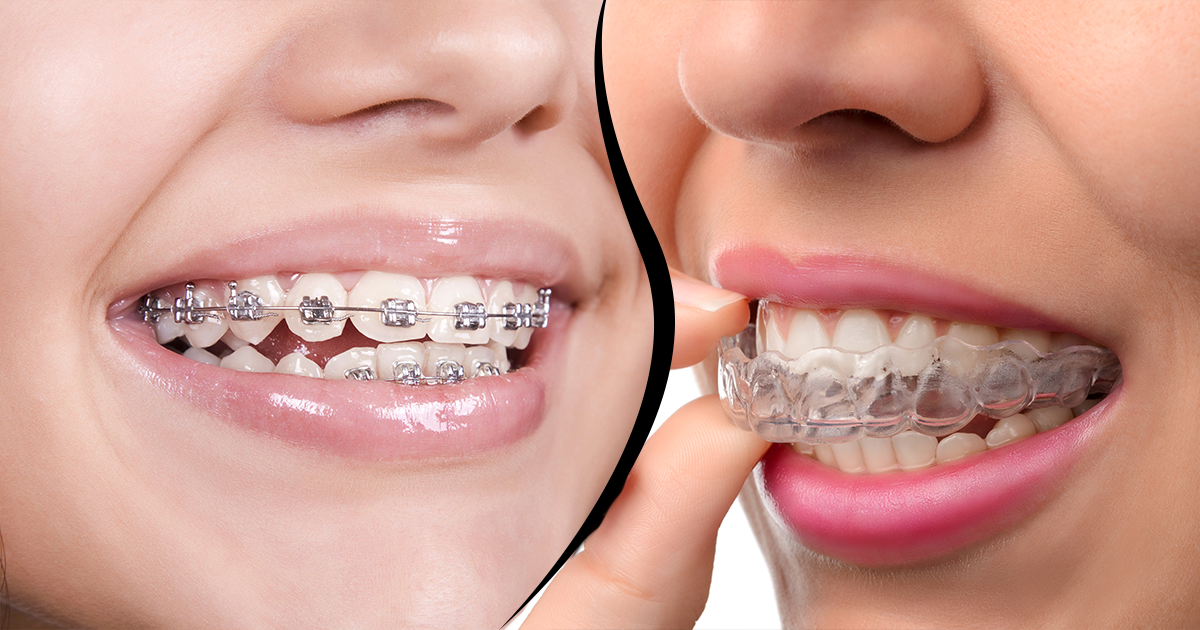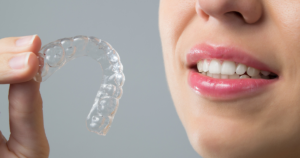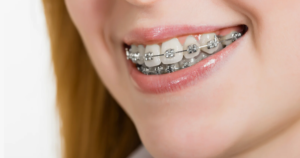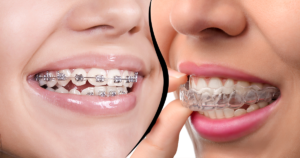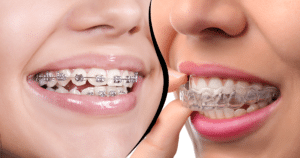Choosing the right orthodontic treatment can be a daunting task. With options like Invisalign and traditional braces, it’s essential to understand the benefits and drawbacks of each to make an informed decision. In this guide, we’ll explore the differences between Invisalign vs Braces, helping you decide the best option for your dental needs in Vancouver.
What is Invisalign:
Invisalign is a modern orthodontic treatment that uses clear, removable aligners to straighten teeth. These aligners are custom-made for each patient, ensuring a comfortable and precise fit. Invisalign is popular for its discreet appearance and convenience.
What are Braces:
Traditional braces consist of metal brackets and wires that are attached to the teeth and gradually adjusted to align them. Braces have been used for decades and are known for their effectiveness in treating various orthodontic issues.
Invisalign vs Braces: Key Differences
Appearance:
- Invisalign: Virtually invisible, making it a popular choice for adults and teens who want a discreet option.
- Braces: Visible metal brackets and wires, although ceramic and lingual options are available for a less noticeable appearance.
Comfort:
- Invisalign: Smooth plastic aligners that are gentle on the mouth and gums.
- Braces: Metal brackets can cause discomfort and irritation in the mouth, especially after adjustments.
Effectiveness:
- Invisalign: Effective for mild to moderate orthodontic issues.
- Braces: Suitable for all types of orthodontic problems, including severe misalignments.
Maintenance and Hygiene:
- Invisalign: Aligners are removable, making it easier to maintain oral hygiene.
- Braces: Requires diligent cleaning around brackets and wires to prevent plaque buildup and tooth decay.
Pros and Cons:
Invisalign
Pros:
- Discreet appearance
- Removable for eating and cleaning
- Less discomfort and irritation
Cons:
- Requires discipline to wear aligners 20-22 hours per day
- May not be suitable for some very complex cases
Braces
Pros:
- Effective for all types of dental corrections
- No need to remember to wear them, as they are fixed
- Cons:
- Visible
- Can cause discomfort and irritation
- More challenging to maintain oral hygiene
The Benefits of Clear Aligners
Clear aligners, such as Invisalign, offer several advantages over traditional braces, including a discreet appearance, greater comfort, and the ability to remove them for eating and cleaning. For patients looking for a less noticeable option to straighten their teeth, Invisalign braces are a top choice.
Why Choose Invisalign Over Braces? Insights and Considerations
Are there any drawbacks to Invisalign?
While Invisalign orthodontist treatment offers numerous benefits, it also has its drawbacks. It requires strict discipline to wear aligners for 20-22 hours daily, and it may not be suitable for very complex cases. For patients with more severe alignment issues, orthodontic braces might be the better option.
Is Invisalign more expensive than traditional braces?
Invisalign dental treatment can be more expensive than traditional braces consultation. The cost of Invisalign braces may vary depending on the complexity of your case and the length of treatment. However, some patients find the extra cost worth the benefits of clear aligners.
Why do people choose Invisalign over braces?
Many people prefer Invisalign over traditional braces due to its discreet appearance and the ability to remove the aligners for eating and cleaning. This makes Invisalign braces an attractive choice for adults and teens who want a more flexible and less noticeable option for straightening their teeth.
Why do orthodontists not like Invisalign?
Some orthodontists may not favor Invisalign because it requires the patient to wear the aligners consistently, and the results may not be as predictable as with traditional braces. For more complex cases, teeth braces may provide more reliable and effective results.
outcomes.
Ready to transform your smile?
Contact us at Transcend Specialized Dentistry to schedule a complimentary braces consultation with our Invisalign orthodontist and learn more about your orthodontic options, to move you closer to the smile you’ve always dreamed of.
FAQs:
1. Which is more effective, Invisalign or braces? Both can be very effective when used correctly.
2. Can I eat with Invisalign? Yes, you can remove the aligners while eating.
3. Are braces cheaper than Invisalign? It depends on the case, but generally braces are not cheaper than Invisalign.
4. How often do I need to visit the orthodontist with Invisalign? Typically, every 6-8 weeks.
5. Can adults get braces or Invisalign? Yes, both treatments are suitable for adults.
6. What are the main advantages of Invisalign over braces? Invisalign is nearly invisible, more comfortable, and allows for easier oral hygiene maintenance compared to braces.
7. How do I clean my Invisalign aligners? You can clean your aligners using a soft toothbrush and clear, mild soap. Avoid using hot water as it can warp the aligners.
8. Will Invisalign affect my speech? Some people experience a slight lisp at the beginning, but it typically goes away as they get used to wearing the aligners.
9. Can I play sports with braces or Invisalign? Yes, but it’s recommended to wear a mouthguard during physical activities to protect your teeth and braces.
Choosing between Invisalign vs Braces depends on your specific needs, lifestyle, and budget. Both options offer effective solutions for straightening teeth, but it’s essential to consult with an orthodontist to determine the best choice for you.
Ready to transform your smile? Contact us at Transcend Specialized Dentistry to schedule a complimentary orthodontic consultation with our Orthodontics Specialist and learn more about your orthodontic options, to move you closer to the smile you’ve always dreamed of.
Choosing the Right Orthodontist in Vancouver:
Selecting a skilled orthodontist is crucial for successful treatment. Look for experienced professionals with positive reviews and a portfolio of successful cases. Consultations can help you understand the treatment process and expected

